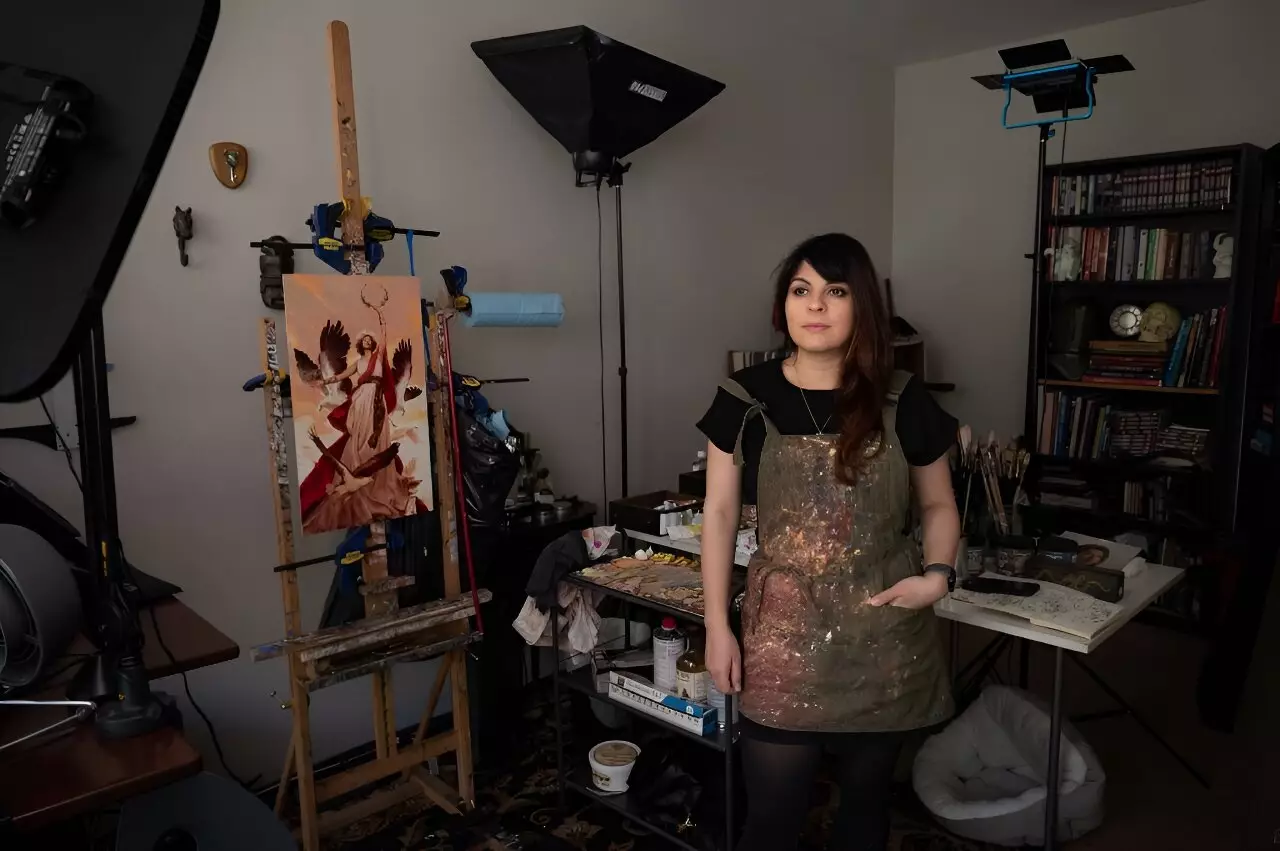The rise of artificial intelligence (AI) has brought both excitement and concern to the world of art. While AI can create impressive imitations of artists’ styles, it often does so without giving credit or compensation to the original creators. This issue has led artists, such as US illustrator Paloma McClain, to take action. McClain turned to a free software called Glaze, developed by researchers at the University of Chicago, to protect her work and deter AI copycats.
Protecting Artistic Integrity
Glaze is a powerful tool that outsmarts AI models by manipulating pixels in ways that are imperceptible to human viewers but drastically alter the appearance of digitized art to AI. Professor Ben Zhao, a computer science expert at the University of Chicago, emphasizes that Glaze’s purpose is to protect human creators against invasive and abusive AI models. The software, which was developed in just four months, originally disrupted facial recognition systems but quickly expanded to defend artists from imitators.
One of the significant challenges in the AI art realm is the unauthorized usage of data for training AI models. Digital images, audio, and text are often scraped from the internet without explicit consent. However, Glaze’s release in 2023 has already made a significant impact. With over 1.6 million downloads, artists and creators are equipped with a defense mechanism to safeguard their content against unauthorized AI replication.
Zhao’s team is not resting on their laurels. They are continuously working on enhancing Glaze’s capabilities with a new project called Nightshade. This enhancement aims to confuse AI models even further, making them misinterpret images. For example, getting an AI model to recognize a dog as a cat. McClain believes that Nightshade’s poisoned images, available online, can effectively deter AI imitators with fewer poisoned images than one might expect.
Expanding Protection for Artists
The success of Glaze has attracted the attention of various companies interested in utilizing Nightshade. The ultimate goal is to allow individuals, both independent artists and companies with substantial intellectual property, to protect their content from unauthorized replication. One notable startup, Spawning, has developed Kudurru software. Kudurru detects attempts to harvest large numbers of images from online platforms, enabling artists to block access or send modified images that disrupt AI training.
Putting Artists in Control
Spawning has also taken steps to empower artists by launching haveibeentrained.com. This website includes an online tool that informs artists whether their artwork has been used to train an AI model. It also allows artists to opt-out of such usage in the future, giving them control over their creations and protecting their intellectual property rights.
Combating AI Voice Replication
While Glaze and Kudurru primarily focus on images, researchers at Washington University in Missouri have developed AntiFake software to combat AI replication in speech. AntiFake enriches digital recordings with inaudible noises, making it impossible to synthesize a human voice. The program aims to prevent the creation of “deepfakes,” which are fake audio or video recordings of individuals saying or doing things they never did. This technology has received recognition from a popular podcast seeking to protect its productions from being manipulated.
Towards a Consent-Based AI Future
Artists and researchers are united in their belief that the best solution is to establish a world where all data used for AI is subject to consent and payment. Jordan Meyer, the co-founder of Spawning, emphasizes the importance of artists receiving credit and compensation for their work. Ultimately, protecting artistic integrity while promoting ethical technological advancements will ensure a harmonious relationship between artists and AI.
Artists are facing a growing challenge from AI imitators. To combat this issue, researchers have developed innovative tools such as Glaze and Kudurru to empower artists and protect their creations. The battle between artists and AI is ongoing, but with continued advancements in technology and dedication from both artists and researchers, it is possible to find a balance that benefits both sides.



Leave a Reply